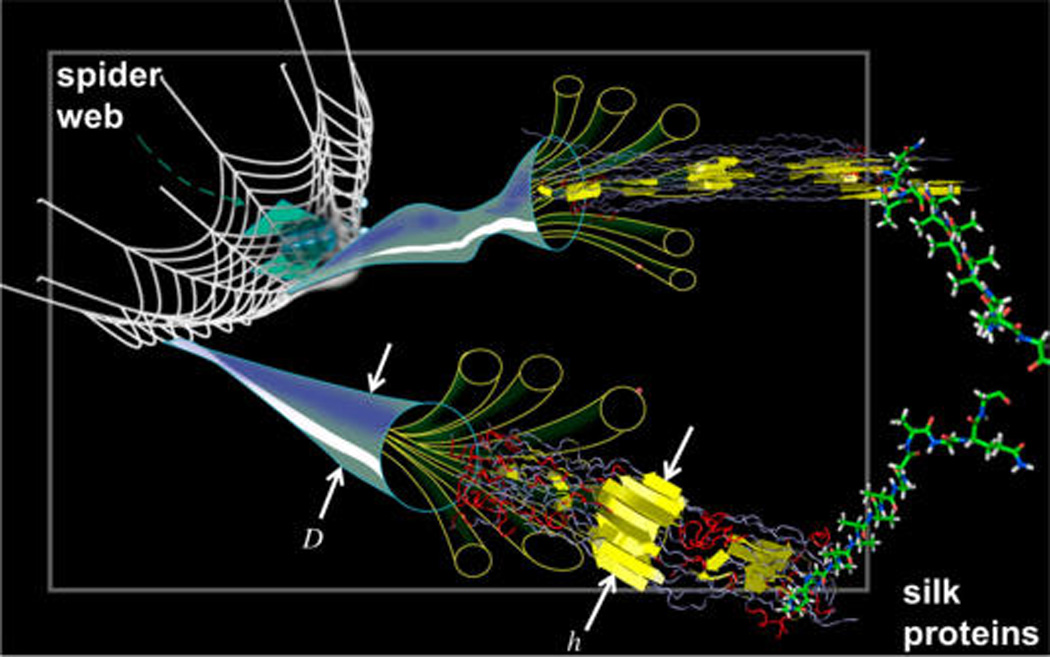Figure 1.

Visualization of the hierarchical material makeup of silk, achieved by controlling all length-scales from the molecular to the macroscopic scale (examples given here include the fiber diameter D, and the beta-sheet crystal size h).4 Spiders and other silk-spinning insects create these complex structures in a combination of chemical cues and self-assembly (directed via the amino acid sequence), physical mechanisms such as shear flow, and large-scale additive processing realized by the movement of the insect akin to a modern 3D printer, and with multiple materials that are placed in and around the web (spiders have invented multimaterial 3D printing billions of years ago). Original figure courtesy National Science Foundation, and adapted here.
